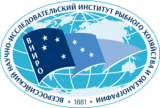
QR-код документа
Article
Н 73
Новикова, М.В.
Комплексное использование морского гребешка/ Complex use of sea scallop [Электронный ресурс] / Новикова, М.В., Абрамова, Л.С., Родина, Т.В. // Прикладная биохимия и технология гидробионтов: Труды ВНИРО.- М.: Изд-во ВНИРО, 2004.- Т.143.- С. 69-75./ Applied biochemistry and technology of hydrobionts: VNIRO Proceedings.- M.: VNIRO Pablishing, 2004.- V. 143.- P. 69-75. - 2004
Рубрики: Морской гребешок/ Sea scallops
Биохимия/ Biochemistry
Технология/ Technology
Аминокислотный состав/ Aminoacid composition
Аннотация: Исследовали химический состав филе и отходов разделки морского гребешка разных видов, в том числе икры и молок. Установили, что вид гребешка оказывает незначительное влияние на химический и аминокислотный состав образцов. Цветное филе отличается от светлого более высоким содержанием витамина Е и наличием каротиноидов. На основании результатов анализа аминокислотного состава можно заключить, что молоки и икра гребешка являются перспективным сырьем для получения пищевой продукции типа паштетов, а мягкие отходы - для производства биологически активных добавок к пище./ Chemical composition of fillets and dressing waste products, including milt and eggs of different species of sea scallops has been studied. It was established that the species of scaiiops did not exert significant influence upon the chemical and aminoacid structure of samples under study. The colored fillet differs from the light one by a higher content of vitamin E and presence of carotinoides. Based on the results of the analysis of aminoacid composition it may be concluded that milt and eggs of scallops represent highly promising raw material for obtaining food production such as pastes, while soft waste products are recommended to be used for obtaining biologically active food additives.
Доп.точки доступа:
Абрамова, Л.С.
Родина, Т.В.
